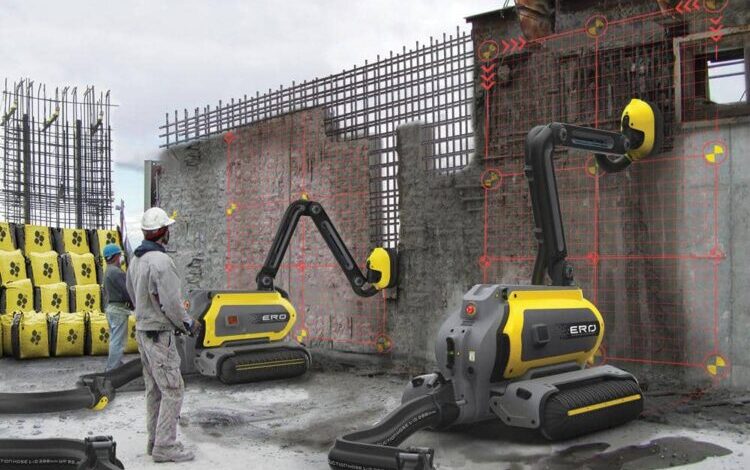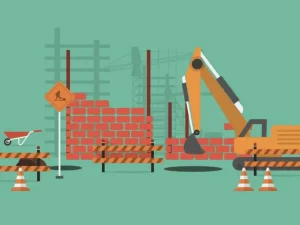
The construction industry has long been associated with manual labor and traditional building methods. However, as technology continues to advance at an unprecedented pace, the question arises: Is the construction industry ready to embrace robots? This article explores the current landscape of the construction sector, delving into the potential benefits and challenges associated with integrating robots into construction processes.
The Current State of the Construction Industry
Before delving into the prospects of robot integration, it is crucial to understand the existing dynamics of the construction industry. Historically, construction has relied heavily on human labor, with skilled workers using conventional tools and techniques to bring architectural visions to life. While advancements in materials and project management have occurred, the core of construction remains fundamentally manual.
Challenges in the Construction Industry
The construction industry faces several challenges that have spurred interest in technological innovations, including robotics. These challenges include labor shortages, safety concerns, project delays, and cost overruns. The demand for skilled construction workers often outpaces the available workforce, leading to delays and increased costs for projects. Additionally, construction sites can be hazardous, with safety being a paramount concern. Robots have the potential to address these challenges by providing a safer, more efficient, and cost-effective alternative to traditional construction methods.
Benefits of Embracing Robots in Construction
- Increased Efficiency: Robots can perform repetitive and labor-intensive tasks with precision and speed, significantly reducing construction timelines. This efficiency can lead to cost savings and timely project completion.
- Enhanced Safety: Construction sites are inherently dangerous, with the risk of accidents and injuries. By delegating certain tasks to robots, human workers can be spared from hazardous conditions, promoting overall job site safety.
- Precision and Accuracy: Robots are programmed to perform tasks with unparalleled precision and accuracy. This can lead to higher quality construction and minimize errors in the building process.
- 24/7 Operations: Unlike human workers who have limitations in terms of working hours and stamina, robots can operate around the clock, accelerating the construction process and meeting tight deadlines.
- Cost Savings in the Long Run: While the initial investment in robotic technology might be substantial, the long-term cost savings in terms of labor, time, and materials can outweigh these upfront expenses.
Challenges in Embracing Robots in Construction

- High Initial Costs: The implementation of robotic technology requires a significant upfront investment in terms of purchasing, installing, and maintaining robotic systems. Many construction companies may be hesitant due to the high initial costs.
- Integration Challenges: Adapting existing construction processes to accommodate robotic systems can be challenging. Construction sites are dynamic environments, and integrating robots seamlessly into these settings requires careful planning and coordination.
- Skilled Workforce Transition: The shift towards a more automated construction industry necessitates a workforce capable of operating and maintaining robotic systems. Training and upskilling existing workers or hiring individuals with the requisite skills may pose a challenge.
- Regulatory Hurdles: The deployment of robots in construction may be subject to regulatory hurdles and safety standards. Navigating these regulations and ensuring compliance can be a complex process.
- Public Perception: The acceptance of robotic technology in construction by the general public may be a potential challenge. Addressing concerns related to job displacement and the perceived role of robots in construction is essential for widespread adoption.
The Role of Robots in Specific Construction Tasks
- Automated Bricklaying: Robotic systems capable of laying bricks with precision and speed have been developed. These systems can significantly expedite the construction of walls and structures.
- Drone Technology for Surveying: Drones equipped with advanced cameras and sensors can be used for site surveys, mapping, and monitoring construction progress. This technology provides real-time data, improving project management.
- 3D Printing in Construction: 3D printing technology allows for the construction of complex structures using various materials. This innovative approach has the potential to revolutionize the industry by reducing waste and construction time.
- Robotic Excavation and Demolition: Robots can be employed for excavation and demolition tasks, minimizing the risk to human workers and enhancing efficiency in these processes.
Conclusion
The construction industry stands at a crossroads, faced with the choice of embracing robotic technology or continuing with traditional manual methods. While there are challenges to overcome, the potential benefits of incorporating robots into construction processes are undeniable. Increased efficiency, enhanced safety, precision, and cost savings are compelling reasons for the industry to explore and adopt robotic solutions.
As technology continues to advance and become more accessible, the construction industry may find itself on the cusp of a transformative era. The successful integration of robots into construction processes requires a collaborative effort from industry stakeholders, including construction companies, technology developers, regulatory bodies, and the workforce.
In conclusion, the question is not whether the construction industry is ready to embrace robots, but rather how quickly and effectively it can adapt to this technological revolution. The future of construction may very well be defined by a harmonious collaboration between human workers and robotic counterparts, ushering in an era of safer, more efficient, and innovative construction practices.



